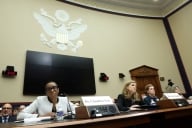You have /5 articles left.
Sign up for a free account or log in.
Federal spending has surpassed state spending as the main source of public funding in higher education, and the primary reason is a surge in Pell Grants in the last decade.
Federal and state funds have different missions. The majority of state funding is used to fund specific public institutions, whereas federal funding is generally awarded through student aid and research grants. State funding goes primarily to public institutions, while federal funding goes to students at public, private and for-profit colleges, and to researchers at public and private universities.
Historically, state funding has been heftier than federal funding. In the 25 years leading up to 2012, states spent 65 percent more on higher education than the federal government.
Yet that trend has rapidly changed in the past decade.
In 2010 federal funding overtook state funding as the main source of public support for universities and colleges throughout the country, according to a report released Thursday by the Pew Charitable Trusts.
That same year funding for Pell Grants -- grants awarded to college students from low-income families -- hit an all time high of about $36 billion. In fact, during the five-year period leading up to 2013, Pell funding increased by 72 percent, and funding of college benefits for veterans tripled.
In 2013 the federal government spent nearly $76 billion on higher education, while states spent about $3 billion less, according to the "Federal and State Funding of Higher Education" study. Federal support include nearly $25 billion in research funding obligations, which are paid over a series of years depending on the length of a research project.
“Our biggest surprise was just the shift that we saw in federal and state higher education funding,” said Phil Oliff, a higher education analyst at Pew. “This is a really significant shift in a pretty short period of time.”
Though the federal government now funnels more money to higher education as a whole, states still supply a greater share of funding to public universities. Public colleges educate 68 percent of all students in the U.S., and in 2013 they received an average of 21 percent of their funding from state funds and 16 percent of their funding from the federal government. Tuition and fees also accounted for 21 percent of public university revenue.
Those averages hide wide variations. Community colleges and nonresearch public institutions tend to get much larger shares of their budgets from state funds. And even at research universities, research grants have a big impact on faculty projects and graduate education, but don't necessarily pay for undergraduate education.
Total public funding per full-time-equivalent student for higher education fell 12 percent in the 12-year period starting in 2000, when adjusted for inflation.
Yet during that time, federal funding nearly doubled while state funding fell -- federal funding grew from $43 billion to $83 billion, while state funding dropped from $78 billion to $71 billion.
Meanwhile, enrollment skyrocketed, growing by 45 percent.
Pew’s report shows that state funding is responsive to the economic climate, while federal funding was less restricted by the economic downturn that began in 2008. In fact, more low-income students attended college during the downturn, and the federal government actually increased its Pell Grant support during that time.
Oliff noted that both federal and state funding vary widely by state. For example, Alaska universities receive, on a per-student basis, six times the state funding of New Hampshire universities. Meanwhile, per-student federal funding in Hawaii is more than double the federal funding in most other states.
Pell funding also varies state to state. There are higher concentrations of Pell recipients in the Southeast, compared to relatively lower concentrations in the Northeast.
On average, the federal government provided nearly $2,100 in Pell funding for every full-time-equivalent student in 2013.








